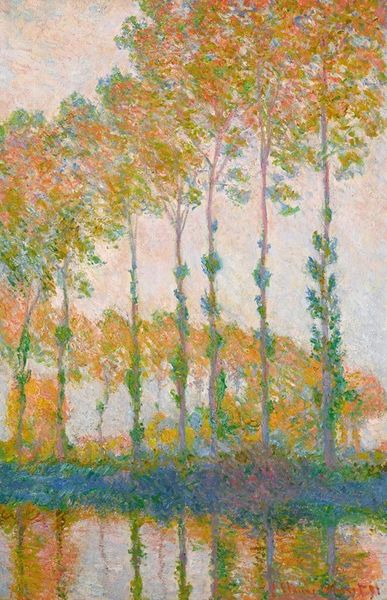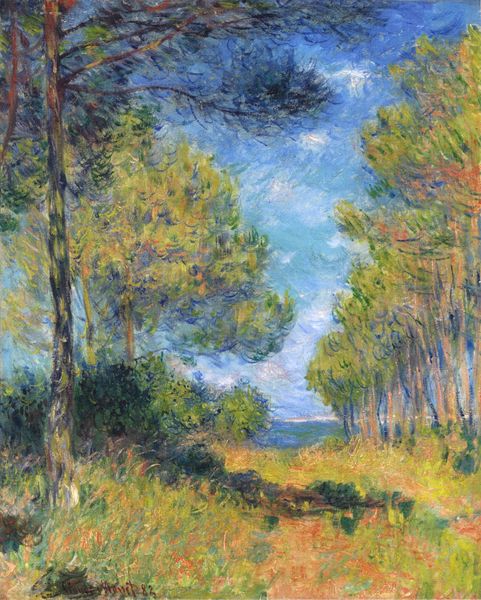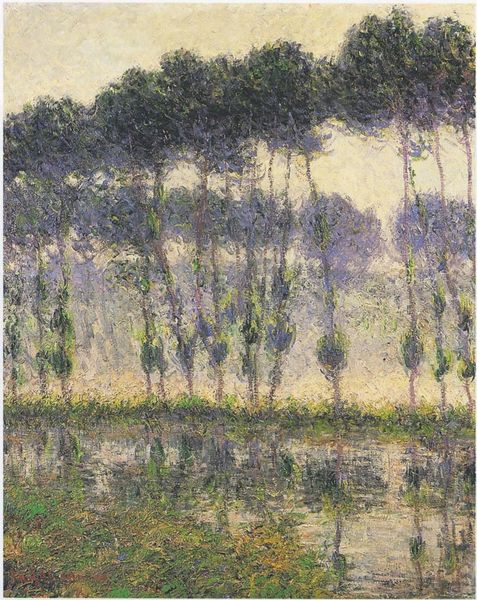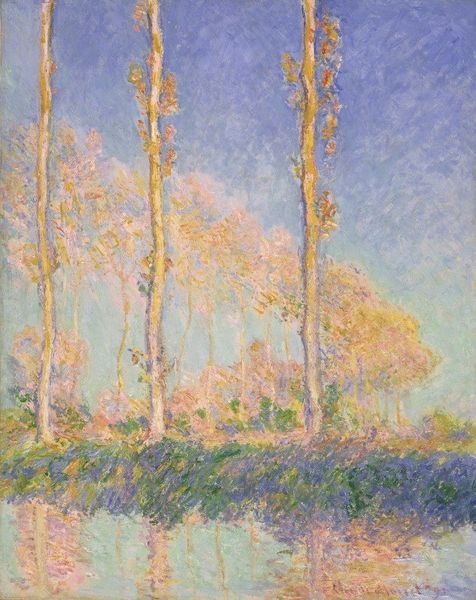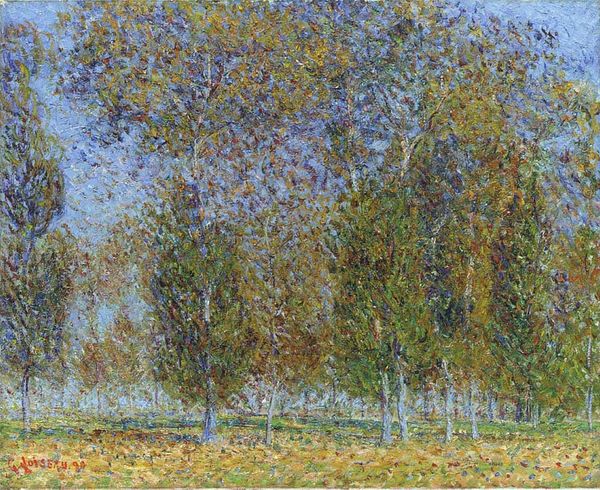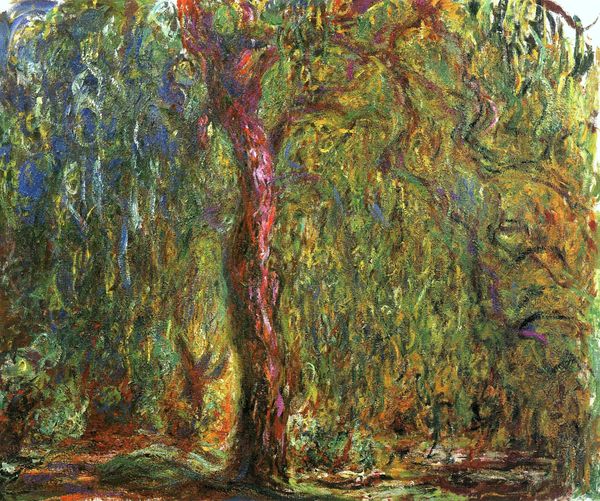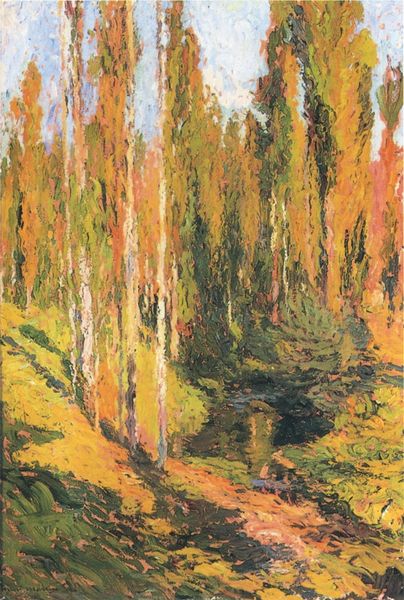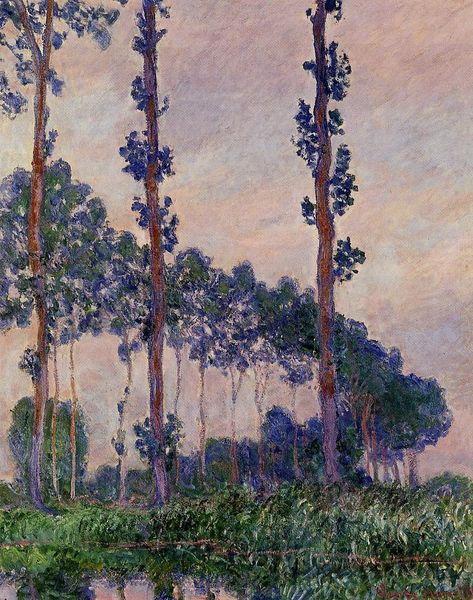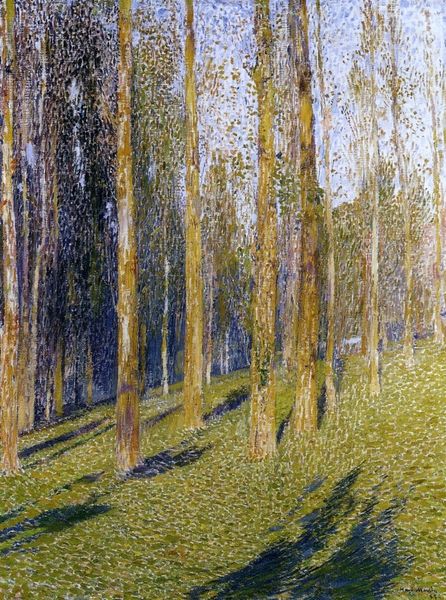
painting, plein-air, oil-paint
#
tree
#
painting
#
impressionism
#
plein-air
#
oil-paint
#
neo-impressionism
#
landscape
#
impressionist landscape
Copyright: Public domain
Curator: Before us is Claude Monet's "Poplars at Giverny," painted in 1887. Editor: It's immediately striking how he captures the shimmer of light through those trees, an almost dreamlike serenity washes over me. Curator: The materiality is essential; notice the visible brushstrokes, the impasto. These aren't idealized trees, but an exploration of pigment, applied en plein air, likely under specific temporal conditions. Think of the labor and quick application demanded. Editor: Yes, and consider the poplar trees themselves. They reach for the sky, almost like spires, historically associated with mourning but also with resilience, a connection to the earth yet aspiration towards the heavens. What of the background's almost pink hue? It lends an ethereal quality, almost otherworldly. Curator: I see the pink more as a product of light reflecting off the landscape at a specific time of day, documented through careful observation. He was meticulous in his rendering of optical experience using his chosen materials. What kind of production chains made his pigments available? How does industrial color affect his vision? Editor: But Monet wasn't merely documenting, was he? These aren't just any trees; they're symbols – of life, death, the transient nature of beauty itself. The play of light filtering through the leaves feels almost divine. Curator: Divine or the industrial production of light itself with innovations in electric street lighting, how new technologies redefined the possibilities of visibility, changing how landscape can be seen? Monet was a modern man. The trees aren't eternal icons, they are subjects available to material inspection. Editor: Maybe there is something deeply embedded that draws on ancestral understandings in nature and landscape even in an industrial and modern context, the symbolism of life's fleeting beauty transcends that context. Curator: Well, whether symbols of transcendence or indicators of industrial processes at the fin de siecle, there’s no question that Monet's "Poplars" are potent representations. Editor: Indeed, a landscape that makes us reflect both on our material existence and our spiritual selves.
Comments
No comments
Be the first to comment and join the conversation on the ultimate creative platform.

